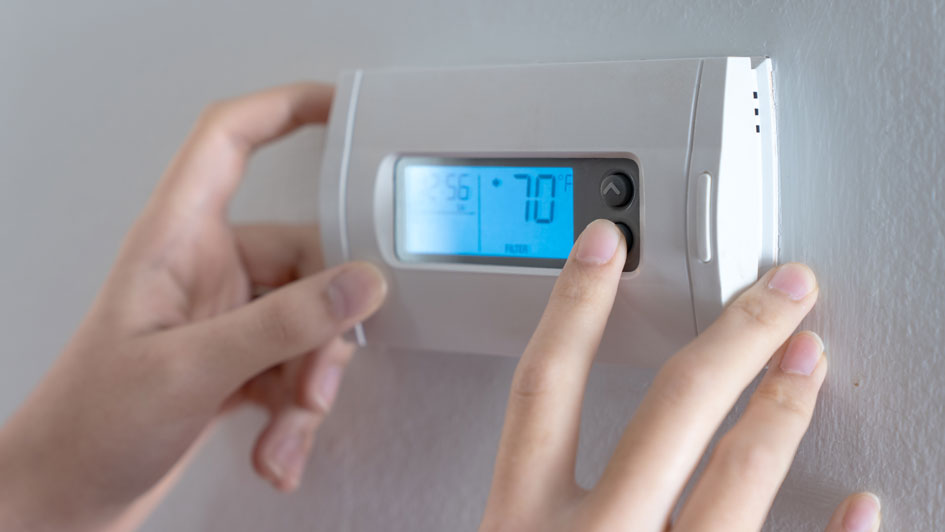
Everyone’s always looking to save money on their utility bills, but you should know there’s a way to keep costs down, even when you're out of the house.
The secret is your thermostat. By making the most out of your thermostat, you can help the thermostat plan for your preferred temperatures. That means you can have different temperature settings for when you’re at home, away or even when you’re asleep.
If you're willing to make these adjustments, you'll be able to enjoy comfortable temperatures while cutting down your energy bills. Here are some ways your thermostat doesn't have to use up all your summer spending money:
While at Home
When you’re home, you want a nice range of pleasant temperatures. It's only natural to want your thermostat lower in the summer if you're indoors to make the most of the cool air.
But in terms of energy efficiency, the best range for the summer is in fact anywhere between 78 and 80 degrees Fahrenheit. This way, you'll keep cool while still keeping your energy bills low.
While Gone
When setting the temperature for a vacation or other trip away from the house, the majority of homeowners will set the thermostat higher than you would if you were in the house.
If your home is located somewhere a little cooler, you can set the thermostat to temperatures as high as 88 degrees while no one is home and then lower it back to the sweet spot of 78-80 degrees once you're home again. This way, your air conditioning system isn't working around the clock to cool an empty house.
While Sleeping
When it comes to sleeping in the summer, you want a temperature that's nice and cool. A good rule of thumb is between 68-72 degrees Fahrenheit. There's less risk of getting too hot or too cold at some point overnight.
Other Ways to Use Less Energy:
- Install a smart thermostat: Trying a smart thermostat in the summer can lower energy costs since it can plan your temperature adjustments according to your lifestyle and personal preferences. They can lower the temperature while you are home or sleeping, before allowing it to get warmer when no one is home. With models like the Lennox iComfort, you are able to adjust settings and schedules through your smartphone, tablet or laptop. Scheduling smart thermostat installation in your Oxford home can be the simplest strategy for maintaining comfortable, yet energy-efficient temperatures whether you're at home or across the country.
- Upgrade your HVAC system: A new HVAC system is another great option for long-term energy savings. If a system boasts high energy efficiency, your utility bills will be lower because it requires less energy to heat and cool your home. Air conditioning installation in Oxford is a breeze for experienced professionals like Franklin's Heating & Air Conditioning, Inc.
- Keep up with AC maintenance: Hiring a skilled professional to perform regular air conditioning maintenance in Oxford can have a big impact on your monthly energy use. If you stay on top of cleaning key components like the coils, checking for damage and keeping vents clear of dust and debris, this can help your HVAC system perform better during day-to-day use.. More efficient operation reduces strain on important or delicate components and lowers operational costs, lowering total energy use and eventually the total monthly bill.
- Replace your air filter regularly: A regular schedule for cleaning or replacing the HVAC system's air filter saves money by improving airflow. When filters become clogged, air conditioners have to work harder, and this greater strain could shorten the system’s life span and cause breakdowns.
- Check if you have enough insulation in the attic: Insulation is a crucial component for any energy-efficient home, keeping the hot air outside and the cool air inside through summer. The North American Insulation Manufacturers Association (NAIMA) recommends that homes in the southern United States should possess at least 13-14 inches of insulation, while states further north need 16-18 inches.
- Review your air ducts: Damage to the ventilation is capable of increasing your energy bills much more than 20 percent, plus it can also lead to problems with your water heater, clothes dryer and other appliances to get into the atmosphere of your home. Checking your ductwork for leaks and sealing them can help with both these issues.
- Seal all other leaky spots in your home: Sealing up other leaks in your home with caulk, foam sealant or weather-stripping can help keep it cooler on hot summer days. Don't forget to check for any gaps around windows, doors and even outdoor fixtures. Making time to seal leaks now can help you save a lot in the long run.
